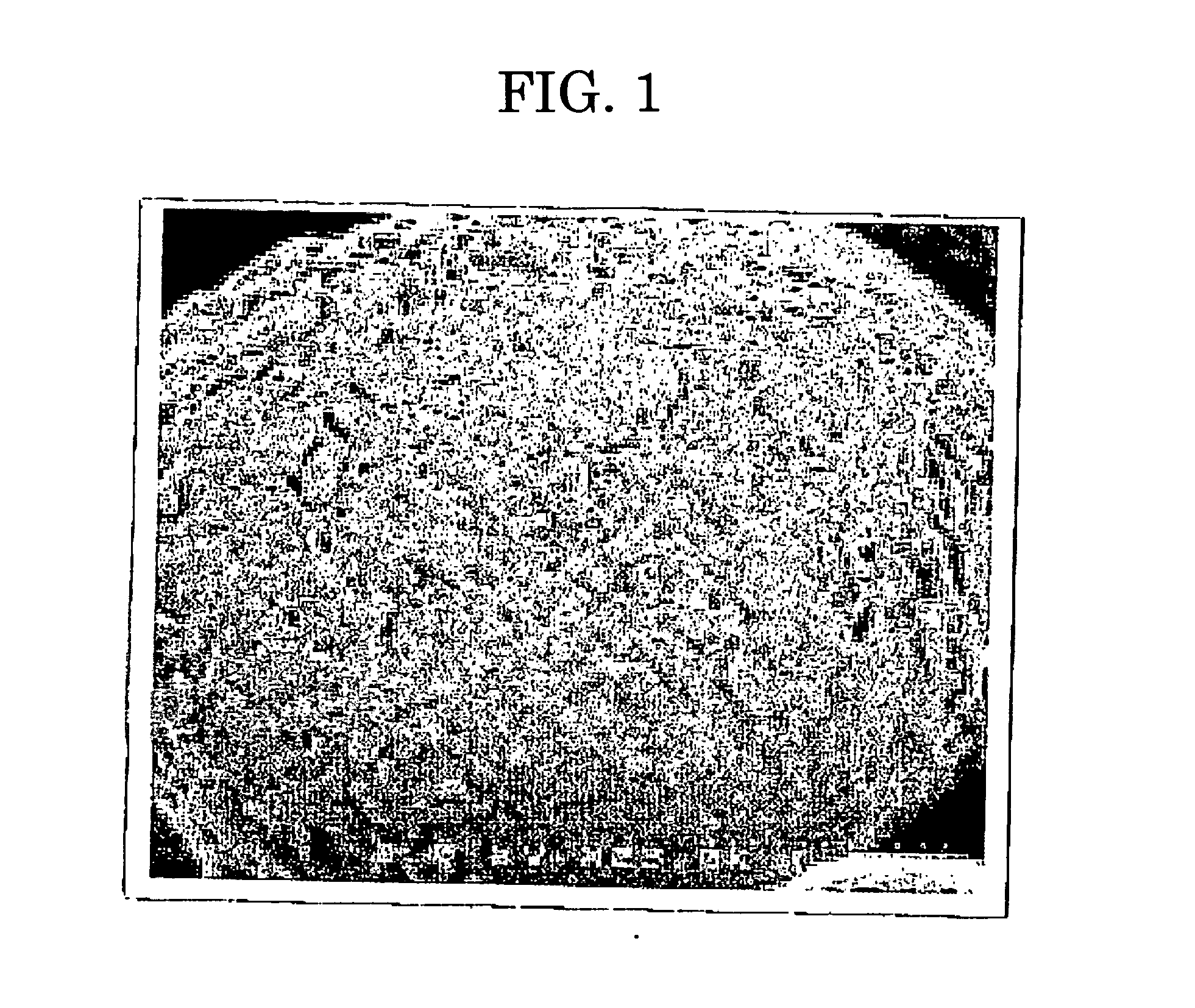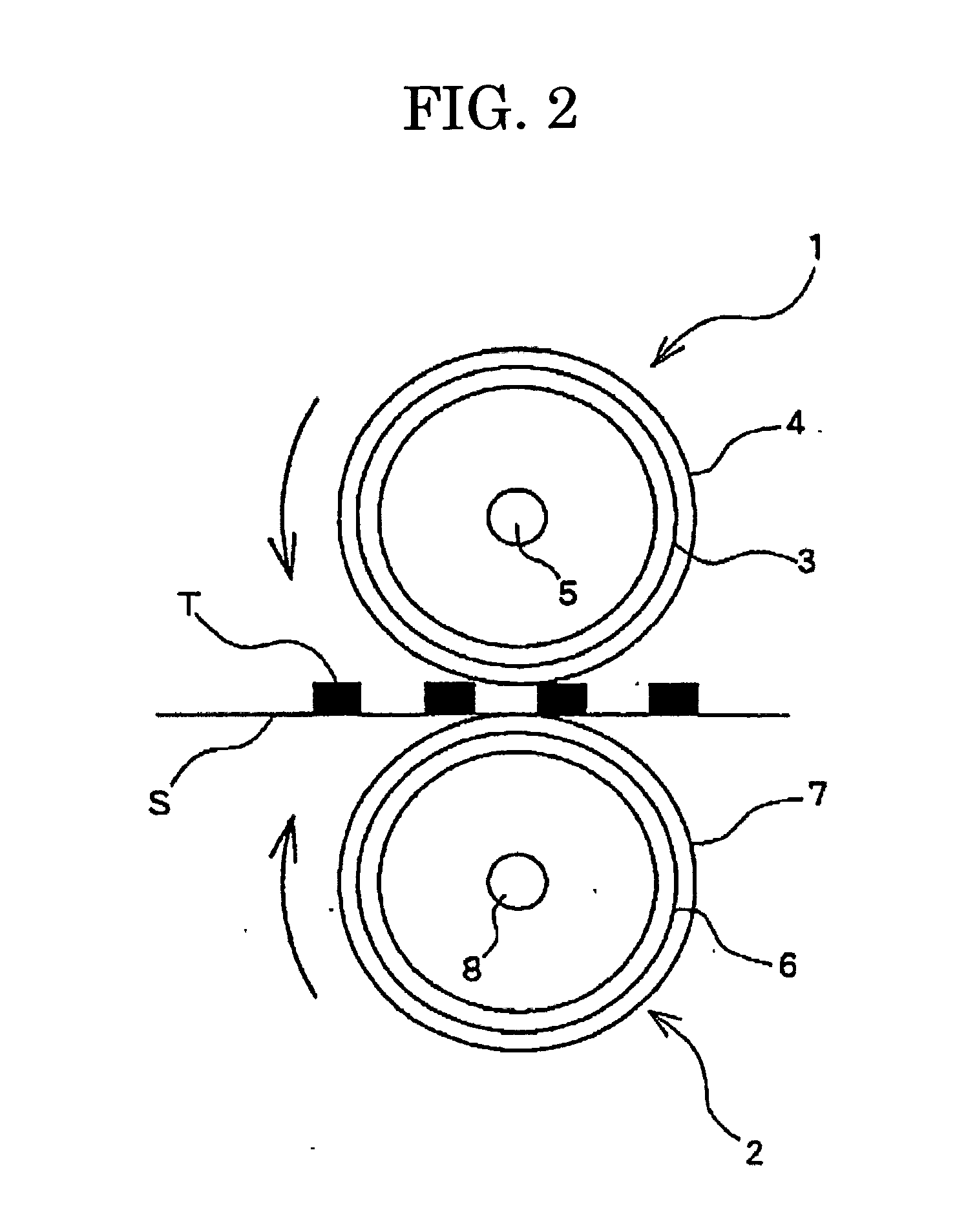Toner for developing electrostatic image
a technology for developing electrostatic images and toners, which is applied in the direction of electrographic processes, electrographic processes using charge patterns, instruments, etc., can solve the problems of difficult friction charge, poor powder flow ability of toner particles with a small particle diameter, and high cost of conventional grinding methods
- Summary
- Abstract
- Description
- Claims
- Application Information
AI Technical Summary
Benefits of technology
Problems solved by technology
Method used
Image
Examples
example 1
[0205] 451 g of 0.1 M-Na3PO4 aqueous solution was added to 709 g of ion exchange water, and the mixture was heated to 60° C. and stirred with a TK homomixer at 12,000 r.p.m. To the mixture, 68 g of 1.0 M-CaCl2 aqueous solution was gradually added, and an aqueous medium containing Ca3(PO4)2 was obtained. 170 g of styrene, 30 g of 2-ethylhexyl acrylate, 10 g of Regal 400R, 60 g of paraffin wax (s.p. 70° C.), 5 g of di-tert-butyl salicylate metal compound, 10 g of styrene-methacrylic acid copolymer (Mw 50,000, acid value 20 mg KOH / g) were charged into a TK homomixer, heated to 60° C., and homogeneously dissolved and dispersed at 12,000 r.p.m. 10 g of 2,2′-azobis(2,4-dimethylvaleronitrile) as a polymerization initiator was dissolved in the dispersion to prepare a polymer-monomer system.
[0206] The polymer-monomer system was put in the aqueous medium, and stirred with a TK homomixer at 10,000 r.p.m. for 20 minutes at 60° C. in a N2 atmosphere to pulverize the polymer-monomer system. Afte...
example 2
[0208] To 100 parts of the solid of the dispersion of colored particles 1 as described in Example 1, one part (in terms of solid) of Aqualic GL (manufactured by Nippon Shokubai Co., Ltd.) was added as a surface treating agent, stirred at room temperature for one hour, and dried with a spray drier GS31 (manufactured by Yamato Science Co., Ltd.) to obtain [toner 2]. According to an observation with a SEM, the surface of toner 2 was not wholly but partially in scab form.
example 3
(1) (Synthesis of Organic Fine Particle Emulsion)
[0211] 683 parts of water, 11 parts of a sodium salt of a sulfate ester of an adduct of ethylene oxide methacrylate (Eleminol RS-30: manufactured by Sanyo Chemical Industries, Ltd.), 138 parts of styrene, 138 parts of methacrylic acid, and 1 part of ammonium persulfate were stirred for 15 minutes at 400 r.p.m. in a reaction vessel equipped with a stirring rod and a thermometer to obtain a white emulsion. The emulsion was heated until the temperature in the system reached 75° C., and allowed to react for five hours. The reactant was further added with 30 parts of 1% ammonium persulfate aqueous solution, and aged at 75° C. for five hours to obtain an aqueous dispersion of a vinyl resin (copolymer of styrene-methacrylic acid-sodium salt of sulfate ester of an adduct of ethylene oxide methacrylate) [fine particle dispersion 1]. The volume average particle diameter of [fine particle dispersion 1] measured by a LA-920 was 0.14 μm. A part ...
PUM
| Property | Measurement | Unit |
|---|---|---|
| Length | aaaaa | aaaaa |
| Length | aaaaa | aaaaa |
| Fraction | aaaaa | aaaaa |
Abstract
Description
Claims
Application Information
 Login to View More
Login to View More - R&D
- Intellectual Property
- Life Sciences
- Materials
- Tech Scout
- Unparalleled Data Quality
- Higher Quality Content
- 60% Fewer Hallucinations
Browse by: Latest US Patents, China's latest patents, Technical Efficacy Thesaurus, Application Domain, Technology Topic, Popular Technical Reports.
© 2025 PatSnap. All rights reserved.Legal|Privacy policy|Modern Slavery Act Transparency Statement|Sitemap|About US| Contact US: help@patsnap.com



